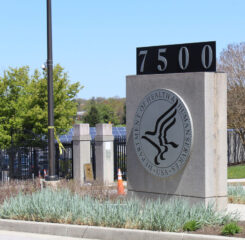Living Wage: Satisfied Workers = Satisfied Customers
“Are the wages we pay consistent with who we say we are?”
That was the pointed question Danielle Willis asked Mark Ricketts about 2 years ago when he stopped by her office at National Church Residences in Upper Arlington, OH.
Willis, who is the organization’s senior vice president of human resources, wondered what message National Church Residences was sending when it paid the minimum wage required by law to workers in its 340 affordable housing and senior living communities, which are located in 28 states and Puerto Rico.
“As an organization, our mission is to provide care and support for those who are most vulnerable,” says Willis. “But if we are paying minimum wage to a full-time employee — $8.10 in Ohio — what are the chances that employee will end up being eligible for social assistance? Are we creating a situation in which our own staff will need our services?”
Satisfying Customers by Satisfying Workers
Willis asked the right person. Ricketts, who is the president and chief executive officer of National Church Residences, quickly became an energetic champion for a 5-year living wage initiative that would aspire to increase the organization’s minimum wage to $14.50 over the next 5 years.
The living wage initiative officially began on Jan. 1, 2016, when National Church Residences adopted a $10 minimum wage across all of its service lines. On Jan. 1, 2017, the organization’s minimum wage rose to $10.80. Employees already earning between $10 and $14.50 received a living wage adjustment of between 1% and 5% over and above their merit pay increase in 2016 and 2017.
“Last year we were trying to envision how we could move the mission (of National Church Residences) forward,” Ricketts told employees in a video announcing the organization’s second wage increase in 2 years. “We were focused largely on the satisfaction of our residents and their families. But we realized that if the 3 or 4 thousand people who work at National Church Residences aren’t satisfied, they are not going to be able to treat all our customers satisfactorily.”
Getting Leaders on Board
National Church Residences spent 6 months designing and approving its living wage initiative. First, Willis and Ricketts consulted with operators of the organization’s 340 communities. They would be responsible for incorporating the wage increases into their operating budgets without any financial assistance from the corporate office.
It took several conversations before operators jumped on board, admits Willis.
“It wasn’t ever a matter that they didn’t think our employees or the roles themselves deserved the increase, because they see firsthand the hard work, the compassion, the love that is necessary to do this work,” says Willis. “It was more a matter of figuring out how they were going to make it work. It was truly a faith walk.”
Operators came on board because they believed that increasing the minimum wage was the right thing to do, says Willis. But there were practical considerations as well.
For example, operators hoped that higher wages would eventually reduce turnover, which would impact the bottom line. They also knew from experience that they were competing for workers with other local businesses that were already raising their hourly wages above $10.
The National Church Residences board of directors approved the living wage initiative in late 2015. Because the living wage goals are aspirational, each year’s wage increase must be approved by the board as part of the regular budget process.
“We literally evaluate this every year,” says Willis. “We will have to see what the external environment is like before we can commit to another increase. This is a multi-year aspirational goal, so we are very clear about the fact that it is not guaranteed.”
Risk and Rewards
Willis acknowledges that raising wages carries a financial risk, especially for a nonprofit organization. But she’s convinced that all organizations must begin a conversation about compensation by evaluating how much risk is right for them.
“You have to weigh the financial risk associated with a wage increase with the benefits that such an increase will give your clients, your residents, and your brand reputation over all,” says Willis.
Not taking the risk associated with higher wages may result in other, more dangerous risks, she points out. Decide not to increase your minimum wage, for example, and you may run the risk of not being able to recruit enough high-caliber staff to take on new admissions and new clients, or to provide the level of care and services that your customers expect.
For National Church Residences, the risk seems to be paying off so far. Since the living wage initiative went into effect, says Willis:
- No staff positions have been eliminated.
- Turnover rates and vacancy times have decreased.
- Employees have shown a greater willingness to work extra shifts, particularly on the weekend.
- The number of employees who said they are “fairly paid” rose by 9 basis points in the organization’s most recent staff engagement survey.
“We believe this is the right thing to do for our organization, but I don’t want anyone to walk away thinking that this is something that is easy to do,” says Willis. “For us, in the end, it came down to one question: ‘Can we afford not to do it?’”

Most Recommended
October 15, 2025
 Shutdown Week Three: Impact of Ongoing Closure on Affordable Housing
Shutdown Week Three: Impact of Ongoing Closure on Affordable Housing
October 23, 2025
Fiscal Year (FY) Funding 2026
October 07, 2025
Immigrant Workforce Matching Program Brings Workforce Relief
Recently Added
October 23, 2025
Report: Public Housing Capital Needs Surpass $169B
October 23, 2025
 CMS: Further Updates on Medicare Claims Hold
CMS: Further Updates on Medicare Claims Hold
October 20, 2025



